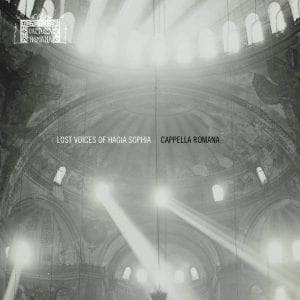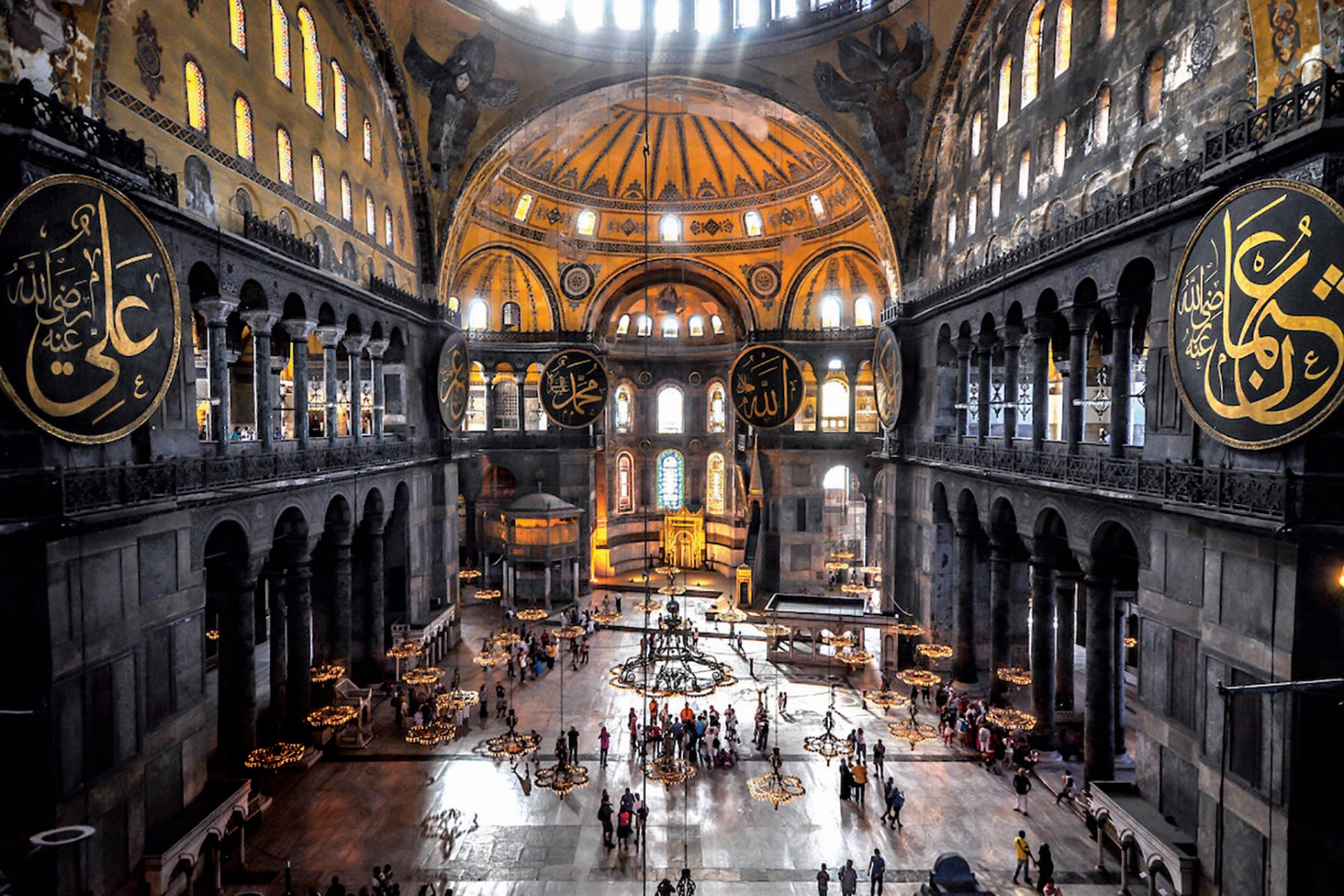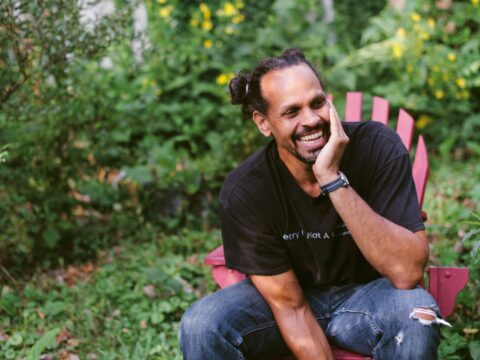Lost Voices of Hagia Sophia is an album that shouldn’t exist. The famous Istanbul sanctuary hasn’t allowed singing within its walls for almost the last century of its complicated 1500-year history. But thanks to art historian Bissera Pentcheva and her research in acoustic archeology, Portland vocal ensemble Capella Romana has been able to recreate chants from the Byzantine divine liturgy as if sung inside Hagia Sophia, without actually recording in the church itself. Lost Voices is both an experiment in sound design and a gloriously reverberant record, redefining the idea of “ambient” music.
Despite its more recent singing ban, Hagia Sophia has been home to many different voices in centuries past. Originally built as a Christian cathedral by Justinian the Great in the sixth century, the building was transformed into a mosque almost a thousand years later when Constantinople (as Istanbul was then called) fell to the Ottoman Empire. In 1935, the Turkish government made Hagia Sophia a public museum, temporarily resolving the competing Christian and Muslim claims to the sacred space. But this past July, Turkish president Recep Tayyip Erdoğan ordered that it be converted back into a mosque, in a controversial political move that alienated Christians and secular Turks alike.
You may unsubscribe from any of our newsletters at any time.
Singing inside Hagia Sophia is still forbidden. As Lost Voices reveals, however, the building was made for music. Listening to the album is a stunningly immersive experience: each track provides a distinct sense of the historic space in which it was theoretically sung. This is especially true of Small Litany and Old Kalophonic Antiphon, in which the distance between the two soloists can be clearly felt. This three-dimensional aspect makes it easy to imagine oneself inside Hagia Sophia, watching light stream in from the dome above, and hearing the voices alternating from opposite sides of the cavernous sanctuary in a stirring call-and-response.
More on Broadview:
- Photographer aims to capture strength of young caregivers
- This Christmas, choirs are looking for new ways to sing together
- New book shines a light on Canada’s forced relocation of Inuit to the High Arctic
This resonance, of course, is a computer-generated illusion. Pentcheva developed the album’s acoustic simulation from that most unexpected of noises: a balloon popping. Because of the singing ban, she had no way of tracking a live voice within the building when she visited Hagia Sophia in 2010. With the help of a museum security guard, in the silence of dawn, she discreetly recorded a balloon pop and its many echoes. Using the data from four such pops, she and her colleague Jonathan Abel digitally reconstructed Hagia Sophia’s acoustics, allowing Capella Romana to experiment with the lively dynamics of the ancient building.

The simulation is highly sensitive, enabling the singers to build sonic layers upon the echoes of phrases they’ve already sung, modifying their voices in real time as they record. In Asmatikon Cherubic Hymn, a prayer that unites earthly worshippers to angels in heaven, a single voice begins the invocation over a droning note. Gradually, supporting voices join in as the melody ascends dramatically, becoming an ethereal yet richly blurred meditation. The hymn’s words are mostly lost in the singing; the 13-minute piece is more impressionist painting than precise tapestry.
But Pentcheva says this musical haze is a feature, not a flaw, of Byzantine chant, amplified by Hagia Sophia’s extraordinary acoustics. The same pieces sung elsewhere wouldn’t create the same sublime atmosphere, since modern churches and concert halls have a much shorter reverberation time (only about two seconds, whereas a note will linger for over 11 seconds in Hagia Sophia before fading away). “There is this process of alienation and estrangement from the register of human language that happens in Hagia Sophia, and is a desired goal,” she told the New York Times.
It’s this otherworldly abstraction that makes Lost Voices so transporting. The album conveys sensation rather than meaning, immersing the listener in medieval-era Istanbul, when Hagia Sophia was filled with divine sound. In a time when communal singing is forbidden for health reasons, and many places of worship are closed, the album offers a surreal escape into the realm of sung prayer. For now, Lost Voices of Hagia Sophia is only a speculative dream — but it’s a dream well worth hearing.
***
This article first appeared in Broadview’s January/February 2021 issue with the title “Divine sound.”
Marie Trotter is a writer in Toronto and Broadview’s circulation marketing intern.
We hope you found this Broadview article engaging.
Our team is working hard to bring you more independent, award-winning journalism. But Broadview is a nonprofit and these are tough times for magazines. Please consider supporting our work. There are a number of ways to do so:
- Subscribe to our magazine and you’ll receive intelligent, timely stories and perspectives delivered to your home 10 times a year.
- Donate to our Friends Fund.
- Give the gift of Broadview to someone special in your life and make a difference!
Thank you for being such wonderful readers.
Jocelyn Bell
Editor/Publisher














Great article & wonderful album. Thank you for publishing it. Great work!